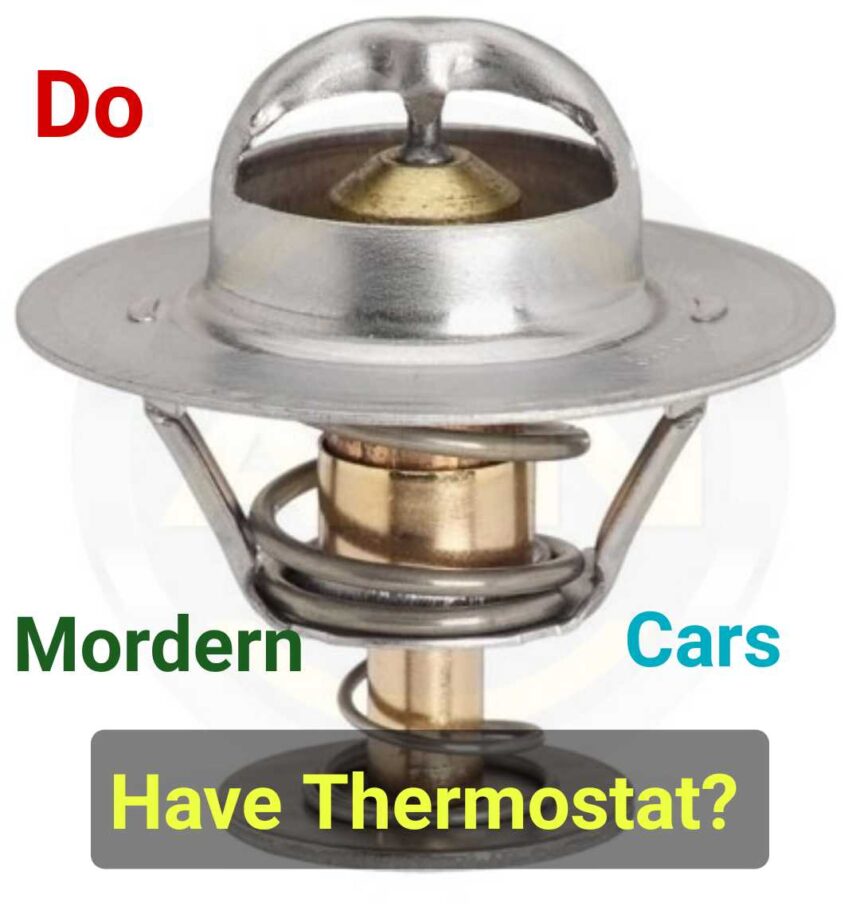When going for a drive, sometimes I wonder what prevents my car from overheating during a drive. What gives you drivers the confidence to flex their driving skills without burning out?
The thermostat, which might have been mentioned once or twice in the workshop during your visit, is solely responsible. It helps by regulating the temperature in a car engine to avoid engine wear, deposits, and emissions by letting the engine cool down.
This article helps you by thereby exploring the thermostats’ role in vehicles, significant changes over the years, and whether or not they are still relevant to our vehicles.
Do vehicles need thermostats?
A thermostat is a cooling component that resembles a valve in the car system, found between the radiator and engine whose location may vary according to the vehicles.
These components’ sole purpose is to distribute coolant from the radiator to the engine block to prevent the engine from heating up thereby improving efficiency, managing fuel economy, and increasing engine longevity.
This component also comes in to improve emissions and reduce pollution by keeping the catalytic converter at the right temperature temperature for optimal performance; this can lead to lower CO2 emissions in the environment.
While the engine is in use, the thermostat keeps the temperature at a certain degree by staying open to release coolant when it reaches 195-220°F and staying closed when the temperature is in check, for an ideal condition for all of the other components in the vehicle to perform at optimum performance.
Just like the thermostats in homes that regulate the home temperature, making it fit to live in.
Types of Thermostats Found in Modern Cars
There are various types of thermostats used these days in vehicles to improve their efficiency.
- Traditional Wax-Pellet Thermostat: Used mostly by older vehicles, they work by using a wax pellet that thereby melts and expands when the engine heats up to push the piston to open the thermostat valve, allowing coolant to flow to the radiator. It shrinks as the engine cools down to close the valve.
- Electronic Controlled Thermostat: Similar to the wax pellet but controlled by the ECU (Engine Control Unit) to open or close the valve, leading to a quick response in cooling the engine block.
- Map-Controlled Thermostat: Similar to the electronically controlled thermostat but slightly advanced. It uses sensors and maps stored in the ECU to not just release coolant but adjust the temperature according to the driving and engine loads
- Variable Temperature Thermostat: More advanced than the map-controlled thermostat, it uses an electronic actuator and sensors to change the opening temperature in real-time It adjusts based on the engine speed, throttle position, and cooling system.
Do modern cars use thermostats?
Yes, modern cars do use thermostats to help control the temperature for better performance.
They use various kinds according to the area of specialty in which the vehicles were built.
They have electronically controlled thermostats and vehicles just like the BMW 3 Series, 5 Series, X5, Volkswagen Gold GTI, Mercedes-Benz C-Class, and E-Class use electronic thermostats to regulate cooling efficiency, fuel efficiency, better emissions, and performance.
In some cases for the turbo supercharged engines, the map-controlled thermostat comes into play, due to its complexity and sensors, vehicles such as the Audi A4, A6, Q5, and Porsche 911 use it to ensure precise cooling for their high-performance engine and driving conditions, ensuring optimum performance without the fear of bursting into flame when in the need for speed.
For the likes of hybrid cars, variant temperature thermostats are used due to their ultra-precise temperature, it is used by Lexus LS500h & RX500h (hybrid models), BMW M5 & M8, and Ferrari SF90 to improve hybrid engine efficiency by adjusting cooling dynamically for extreme performance.
For a vehicle, whether traditional or modern, to perform at its peak, a thermostat is important.
The upgrade between the Modern and Older Cars Thermostat
Unlike modern cars, the older models use a less complex thermostat called the wax pellet thermostat;
- They work without external power, which might cause slow responses compared to electronic thermostats
- They are more cost-effective, which is attributed to their simplicity, than modern cars.
- They simply regulate internal temperature, unlike modern cars, which use sensors to adjust the flow based on driving conditions.
They require minimal maintenance due to their simplicity compared to the modern ones linked to their electronic compartments.
Why should I care for my modern car thermostat?
- To avoid wear and failure, both types of thermostats require regular maintenance.
- For the wax pellet, excessive overheating of the engine control causes the wax to melt, thereby damaging it
- For the electronically controlled thermostat, a surge protector is advised to prevent damage from electrical fluctuation
- Monitor performance on all thermostats, run diagnostic checks, and report any irregularities to professionals.
- Check for leaks and ensure the wax pellet housing and gasket are well-sealed
- Check for loose or corroded wires for the modern thermostats to ensure secure connections.
- Use quality coolants and not just water to prevent rust.
- Ensure that sensors are clean to prevent incorrect readings.
- Ensure updated software, if applicable, for the modern thermostats for optimal performance.
Final Thoughts
Modern cars indeed have thermostats, which help their engines operate effectively without the fear of overheating or bursting into flames.
With their high engines, which contribute to their speed and performance, the thermostat assists in controlling temperature according to the driving needs, with some electronically controlled and others with sensors and maps for precise calculation.
Regular maintenance and timely replacement for a faulty thermostat is duly advised to prevent damage to the engine, hence overheating or poor engine performance.



